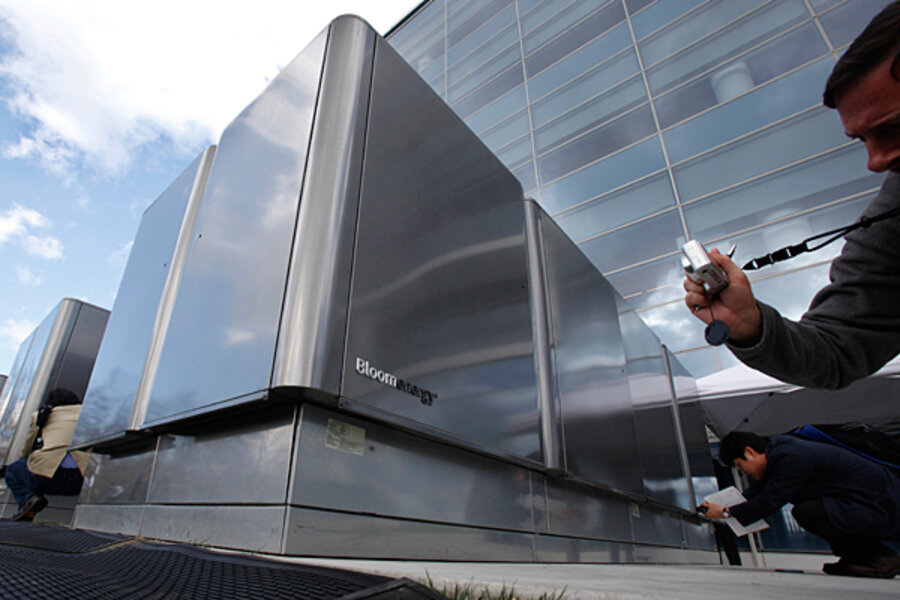Bloom Energy press conference: Bloom box officially unveiled
Loading...
| San Francisco
The veil has been lifted on Bloom Energy, the secretive energy start-up that has been quietly installing its fuel-cell servers that promise cleaner and cheaper energy at some of Silicon Valley’s biggest businesses
The Sunnyvale, Calif., company says that it has developed a new method of making fuel cells, which generate electricity through an electrochemical reaction, that could take the technology from being largely a niche pursuit to one that is broadly accepted by both large companies and small homeowners alike.
“When we heard about Bloom, we thought this is way too good to be true,” said Jim Kennedy, chairman of Cox Enterprises, at Wednesday’s official Bloom Energy launch. “But you have to try something that looks so good.”
Like all the business luminaries – such as the cofounder of Google and chief operating officer of Wal-Mart – that Bloom Energy assembled for its coming-out party, which was held at eBay's San Jose campus, Mr. Kennedy has installed Bloom’s servers with much success. He put his at TV stations in Oakland, Calif., and San Francisco.
(The Monitor wrote about how the Bloom Energy Servers, or boxes, work here and here.)
Bloom has developed a new type of solid-oxide fuel cell that can run on a variety of fuels – such as bio-gas and natural gas – and withstand high temperatures. The boxes, which contain stacks of fuel cells, sit on location and provide 100 kilowats of power at, reportedly, 8 to 10 cents a kilowatt-hour.
The potential benefit of a system like this is that it locates the source of energy closer to the customer, lessens reliance on the grid, and promises to lower carbon emissions.
"We believe that we can have the same kind of impact on energy that the mobile phone had on communications. Just as cell phones circumvented landlines to proliferate telephony, Bloom Energy will enable the adoption of distributed power as a smarter, localized energy source,” said K.R. Sridhar, cofounder of Bloom, in a statement. It will allow customers, he said, to "lower their energy costs, reduce their carbon footprint, improve their energy security."
But many experts say that, while Bloom Energy has made significant inroads, and has an impressive list of backers that include former Secretary of State Colin Powell, the real test will be whether or not it can bring down the price of its servers, which cost around $800,000. Its current customers are also enjoying state and federal tax incentives to pursue clean energy.
In an interview with “60 Minutes,” Bloom Energy cofounder K.R. Sridhar said he anticipated that within the next decade Bloom could sell units big enough to power the average American home for about $3,000.
Forbes.com’s Jonathan Fahey asks: “Are we really falling for this again? Every clean tech company on the planet says it can produce clean energy cheaply, yet not a single one can.”
But, he writes, “the company has managed to tap into the hype machine like no other clean-tech company in memory.”





